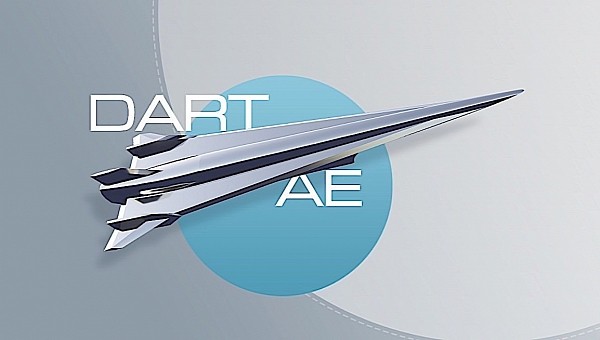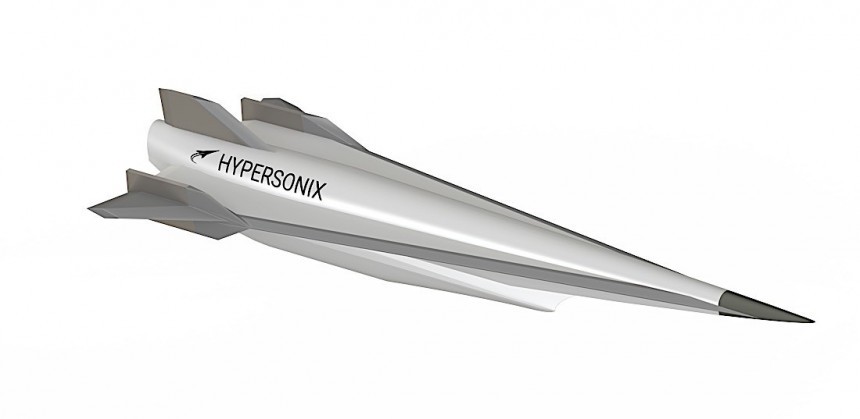The race between competing nations to develop even faster and almost impossible-to-detect and intercept weapons systems is greatly accelerating. Yet few nations out there seem as determined as the U.S. to get ahead of this race, despite several issues encountered along the way.
The American military’s different branches and organizations are almost all involved in this effort, and new developments are announced almost on a monthly basis, although it kind of seems little progress is actually being made. This March, America’s hypersonic dreams are related to an Australian company called Hypersonix Launch Systems.
Hypersonix is a name we’ve heard before. Its crew is currently involved in efforts to develop no less than three pieces of hardware meant to be used for space exploration, be it of the civilian or military variety: the DART AE hypersonic drone, the Velos Intelligence Surveillance Reconnaissance (VISR) flight demonstrator, and the Delta-Velos Orbiter reusable hypersonic launch platform.
Of interest to us this weekend is the DART, because it is one of two technologies the U.S. Department of Defense selected earlier last week for prototype testing, as part of the Hypersonic and High-Cadence Airborne Testing Capabilities (HyCAT1) program.
DART is a machine three meters long (10 feet) that weighs 300 kg (661 pounds). It’s still in development stages, but when ready for full time duty it should be capable of reaching speeds of Mach 7 (5,370 mph/8,642 kph) and travel to distances of up to 500 km (311 miles).
The American military needs less than that for its purposes, as the contract it awarded to Hypersonix for DART testing only calls for the thing to reach a top speed of Mach 5 (3,836 mph/6,173 kph) and fly for just 3 minutes. So, sometime over the next 12 to 18 months, the Australian company will have to come up with a prototype that could be tested in a so-called “representative environment,” while at the same time keeping a “maneuverable/non-ballistic flight profile.”
I said Hypersonix is one of two companies fighting for more attention with the military when it comes to this kind of HyCAT1 solutions. The second would be Fenix Space, a California-based startup that’s working on a technology it describes as game-changing: that would be launching a rocket into space and by using an airplane to literally tow it through the air to a specific altitude from where it can go about its business on its own.
The American military says it had to turn to both foreign companies and rather unconventional technologies because at the moment the “slow pace of hypersonic research and development has significantly impacted the DoD’s ability to mature hypersonics technology and retain a competitive advantage.” We’ll just have to wait and see if results come faster this way.
Hypersonix is a name we’ve heard before. Its crew is currently involved in efforts to develop no less than three pieces of hardware meant to be used for space exploration, be it of the civilian or military variety: the DART AE hypersonic drone, the Velos Intelligence Surveillance Reconnaissance (VISR) flight demonstrator, and the Delta-Velos Orbiter reusable hypersonic launch platform.
Of interest to us this weekend is the DART, because it is one of two technologies the U.S. Department of Defense selected earlier last week for prototype testing, as part of the Hypersonic and High-Cadence Airborne Testing Capabilities (HyCAT1) program.
DART is a machine three meters long (10 feet) that weighs 300 kg (661 pounds). It’s still in development stages, but when ready for full time duty it should be capable of reaching speeds of Mach 7 (5,370 mph/8,642 kph) and travel to distances of up to 500 km (311 miles).
I said Hypersonix is one of two companies fighting for more attention with the military when it comes to this kind of HyCAT1 solutions. The second would be Fenix Space, a California-based startup that’s working on a technology it describes as game-changing: that would be launching a rocket into space and by using an airplane to literally tow it through the air to a specific altitude from where it can go about its business on its own.
The American military says it had to turn to both foreign companies and rather unconventional technologies because at the moment the “slow pace of hypersonic research and development has significantly impacted the DoD’s ability to mature hypersonics technology and retain a competitive advantage.” We’ll just have to wait and see if results come faster this way.








